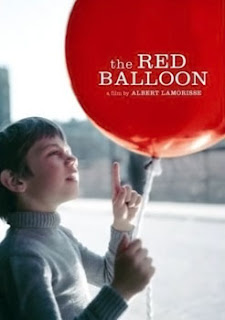Well, I won’t let that diminish my happy memories of this film, which I recently revisited with George, Pearl and our seven-year-old friend Elliott. Forty years old this year, Willy Wonka and the Chocolate Factory still stirs the imagination and is every bit as weird and wonderful as I remembered it. Based on Roald Dahl’s novel Charlie and the Chocolate Factory, the film delves into some of the darker aspects of human nature, but is buoyed by energetic musical numbers and the clever and nuanced comedy of Gene Wilder as Willy Wonka.
A refresher on the plot: A good-natured boy named Charlie Bucket works to support his family, which includes four bedridden grandparents. When mysterious candy-maker Willy Wonka offers to admit five lucky people inside his factory, Charlie, like every child on the planet, becomes preoccupied with finding one of the “golden tickets” tucked inside a Wonka Bar. With hardly a penny to spare on chocolates, however, his odds seem slim.
Night after night, the TV news reports as the tickets are found, introducing a fantastic cast of despicable child characters: the gluttonous Augustus Gloop, the gum-smacking Violet Beauregarde, the screen-obsessed Mike Teavee, and the icon of rich, spoiled brattiness: Veruca Salt.
After a few suspenseful twists, Charlie finds the last golden ticket and runs home to show his family. On the way, an evil-looking man named Slugworth stops Charlie and promises to make him rich if he will bring him one of Wonka’s Everlasting Gobstoppers. At home, Grandpa Joe miraculously gets out of bed and agrees to join Charlie for the factory tour.
In addition to a prized look behind the scenes, Wonka offers the children a lifetime supply of chocolate, IF they abide by his rules during the tour. As the film progresses, each child meets his or her demise, as their true and terrible natures betray them. Even the lovable Charlie gives in to temptation at one point—but if rule-breaking and deception are inherent to the human existence, the film suggests that better intentions can sometimes rise above, and honesty can lead to redemption.
So, how did the kids like Willy Wonka and the Chocolate Factory? On the whole, they loved it. They were appropriately aghast at the behaviors of the “bad” children, which generated lots of comments, and they easily identified with Charlie, who has to be one of the most sympathetic characters in the history of film. Their favorite part of the movie was clearly the magical moment when the tour arrives at the factory’s interior, with its chocolate stream and everything edible and made of candy. A child’s dream come true!
However, there were a couple of scenes which made me realize this film is not ideal for very young viewers. One of these is the boat ride into the depths of the factory. As Wonka’s boat catapults through a tunnel, disturbing images pop up on the walls: a chicken getting its head cut off, a huge centipede crawling over a man’s face, and the like, as Gene Wilder sings a creepy song. Looking at this scene in light of current moviemaking, the effects seem endearingly clunky, and yet it still packs a punch for young viewers. All three had wide eyes, and three-year-old George ran from the room, thankfully missing most of this scene. I remember doing the same thing! So, if young kids are watching, a fast-forward is advised.
Also, watching each of the misbehaving kids get their comeuppance may be troubling, most notably Augustus Gloop disappearing into the chocolate river and being suctioned up into a tube. The film makes it clear that each kid is unharmed in the end, but still. The kids talked about the tube scene for a few days after.
My overall take: This was a fun film for me in terms of nostalgia and the kids enjoyed it, but I think it is probably more geared to slightly older kids. The site Common Sense Media recommends it for kids age eight and above, and that sounds about right to me too. We will definitely watch it again, but will probably wait a couple of years.

